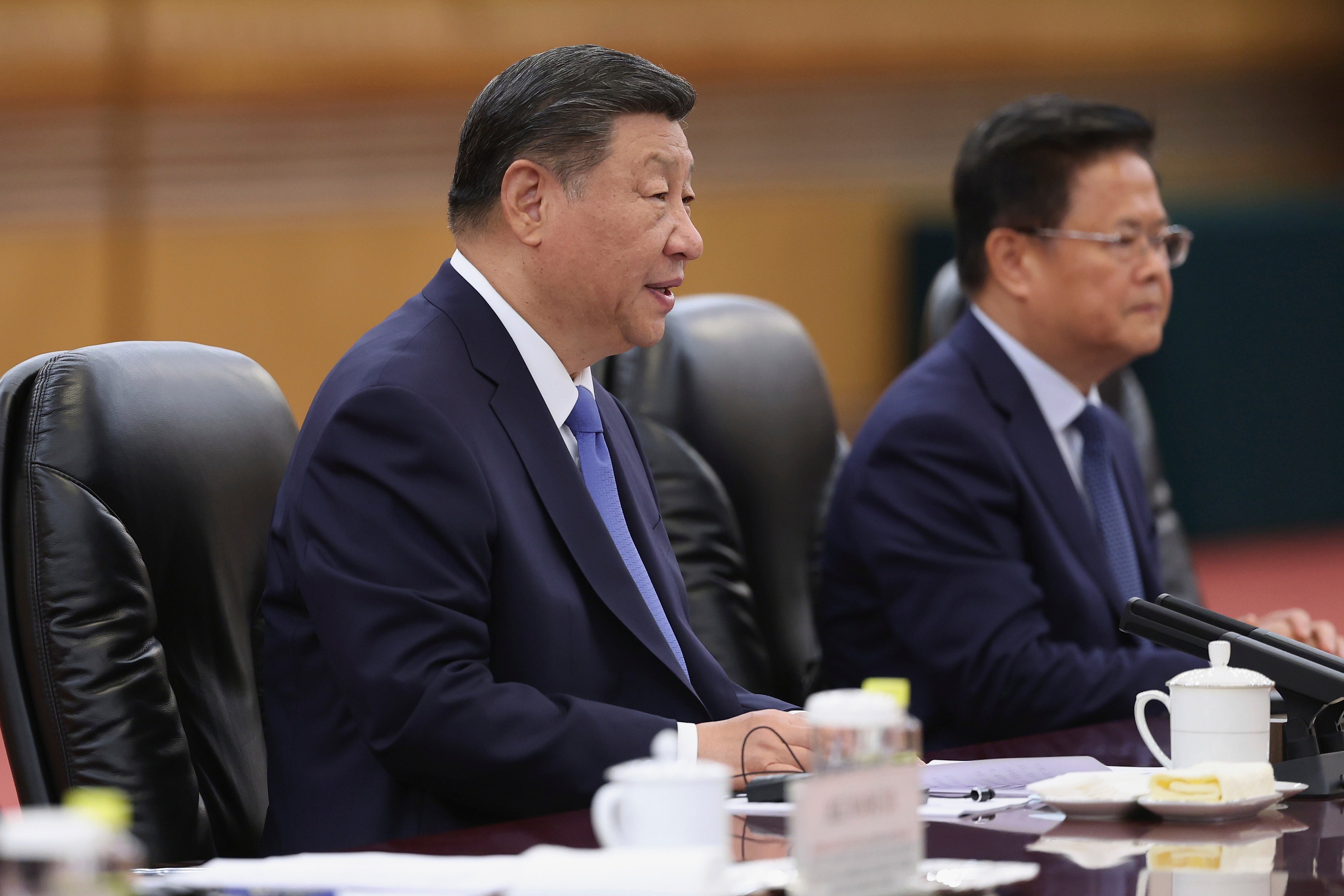What's behind China's launch of an intercontinental ballistic missile
China has test-fired an intercontinental ballistic missile into the Pacific Ocean in a rare occurrence, adding to tensions in the region where multiple countries have overlapping territorial claims

China test-fired an intercontinental ballistic missile into the Pacific Ocean on Wednesday in a rare occurrence, adding to tensions in the region where multiple countries have overlapping territorial claims and both Beijing and Washington seek to project their influence.
The launch was part of routine training by the People’s Liberation Army’s Rocket Force, which is in charge of conventional and nuclear missile operations, and was not aimed at any country or target, the Defense Ministry said in a statement.
The ICBM, carrying a dummy warhead, landed in a designated area in the sea, the ministry said, without specifying where exactly.
China rarely tests ICBMs out in international waters, with some experts tracing the last such deployment back to May 1980, when Beijing launched a DF-5 missile into the South Pacific. Usually, the PLA test-fires ballistic missiles in China’s remote Xinjiang region or in the Bohai Sea.
Why the Pacific, why now?
China choosing the Pacific Ocean as the location for test-firing its missile comes across as both a display of its increased nuclear capabilities and as a warning to the United States and its allies in the region, experts say.
“There is no other potential audience, as China does not expect to have to confront the EU or the U.K. militarily,” said Steve Tsang, director of the SOAS China Institute in London.
The test also comes weeks ahead of an expected call between Chinese leader Xi Jinping and U.S. President Joe Biden. It marks an increase in regional security tensions with U.S. allies Japan and the Philippines, and a continuation of frictions with the self-ruled island of Taiwan, which Beijing claims as its own territory.
Taiwan’s Defense Ministry said Wednesday it was monitoring the missile launch, along with other military exercises by China in the region.
The launch, coinciding with the U.N. General Assembly meeting in New York, "is a pretty blunt signal” to the international order, said Drew Thompson, a senior fellow at the S. Rajaratnam School of International Studies in Singapore and a former U.S. defense official.
“China is signaling that its forbearance has limits, that it is prepared to use its most powerful weapons to deter adversaries or punish them if needed, if deterrence fails,” he said.
Wednesday's launch also follows a series of corruption arrests this year that ensnared several leading officers in its rocket corps on allegations of misconduct. Its aim could be to both provide assurances at home and signal to the world that the issues have been resolved.
How strong is China's military?
China boasts the world’s largest standing army and the biggest navy. Its military budget is the second highest in the world, after that of the U.S.
According to the U.S., China also has the largest air force in the Indo-Pacific, with more than half of its fighter planes consisting of fourth or fifth generation models. China also boasts a massive stockpile of missiles, along with stealth aircraft, bombers capable of delivering nuclear weapons, advanced surface ships and nuclear-powered submarines.
In his more than a decade in power, Xi, who is also chairman of the Central Military Commission, has spearheaded the armed forces’ modernization, with investments in high-tech military technologies from stealth fighters to aircraft carriers and a growing arsenal of nuclear weapons.
China’s defense budget has more than doubled since 2015, even as the country’s economic growth rate has slowed considerably. A U.S. Department of Defense report last year said China has continued to strengthen the PLA’s ability to “fight and win wars against a strong enemy.”
How China's missiles compare to those of others?
The U.S. report also estimated China had more than 500 operational nuclear warheads as of May 2023 and was on track to accumulate more than 1,000 operational nuclear warheads by 2030.
China has not revealed the size of its nuclear arsenal.
In comparison, Russia is believed to have a total inventory of more than 5,580 warheads — including 4,380 stockpiled warheads for operational forces, as well as an additional 1,200 retired warheads awaiting dismantlement — according to a report this year by the Federation of American Scientists.
The same report put the U.S. nuclear warheads at 5,044.
How common are missile tests in the region?
Few countries have ICBMs in their arsenal, and testing is usually restricted to their own territory. North Korea has carried out multiple ICBM tests since 2017, including firing a developmental solid-fueled missile in December that came down in the waters between the Korean Peninsula and Japan.
The U.S. earlier this year fired two unarmed ICBMs equipped with reentry vehicles from California and brought them down on an American test site in the Marshall Islands.
___
Associated Press journalists Emily Wang Fujiyama in Beijing and David Rising in Bangkok contributed to this report.
Bookmark popover
Removed from bookmarks